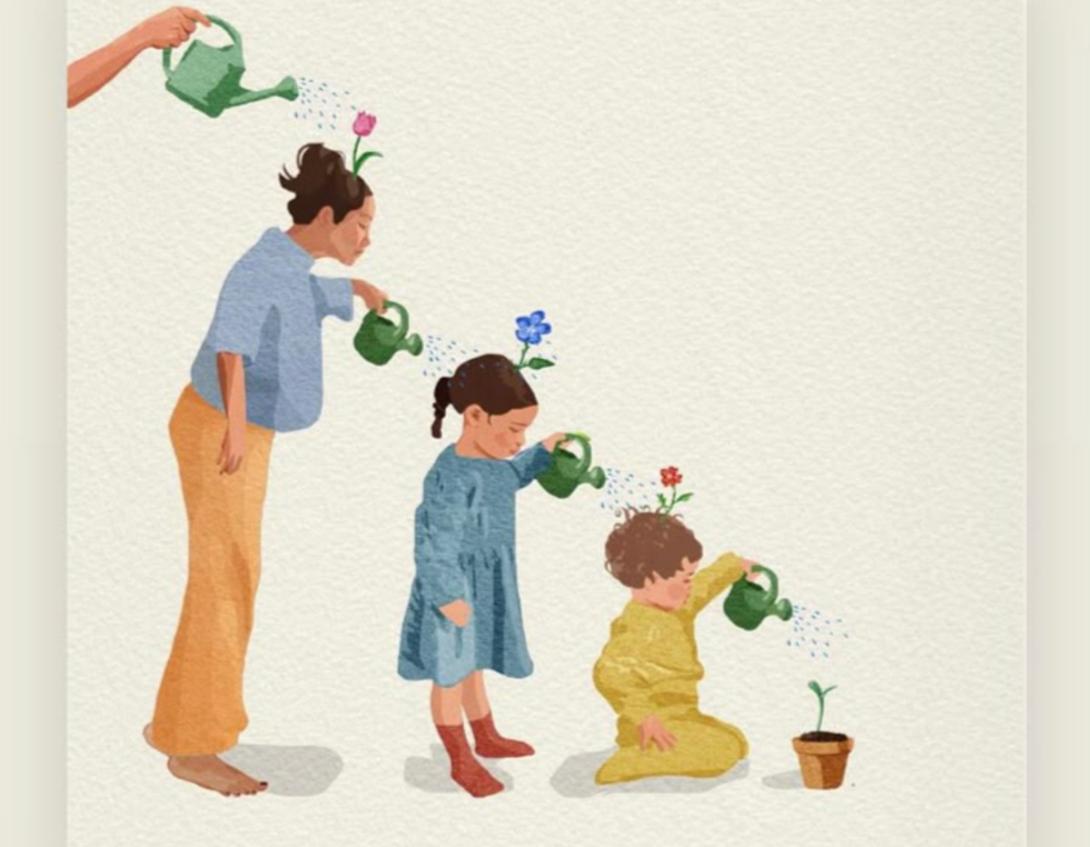
Motherhood is a choice you make every day, to put someone else’s happiness and well-being ahead of your own, to teach the hard lessons, to do the right thing even when you’re not sure what the right thing is… and to forgive yourself, over and over again, for doing everything wrong.
—Donna Ball
Becoming a mother is a beautiful and transformative experience that is filled with positive emotions and hope for the future. However, this journey can also pose significant risks and challenges, especially for those who lack access to proper medical care and support. Ensuring safe motherhood is crucial for the well-being of both the mother and child, and it is important to provide high-quality care throughout the entire process of pregnancy, delivery, and postpartum recovery.
Every year on April 11, National Safe Motherhood Day is celebrated to raise awareness about the importance of providing adequate care during pregnancy, childbirth, and postnatal services. This day was declared by the Government of India in 2003, in honour of the birth anniversary of Kasturba Gandhi. The declaration was made in collaboration with the White Ribbon Alliance India (WRAI), a coalition of 1800 organizations dedicated to improving maternal and child health.
Safe motherhood refers to the measures taken to ensure the well-being and health of women during pregnancy, childbirth, and the postpartum period. It is a significant global public health issue, particularly in low- and middle-income countries, where maternal mortality and morbidity rates are still alarmingly high. The World Health Organization defines safe motherhood as enabling women to have safe and satisfactory pregnancies and childbirths with access to high-quality healthcare and social support.
In 2007, the Safe Motherhood Initiative (SMI) marked its 20th anniversary. This international effort aimed to raise awareness about the extent and impact of maternal mortality and encourage governments, donors, UN agencies, and other stakeholders to take action to address this issue. The upcoming 20th anniversary of the SMI presents an opportunity to assess the progress of safe motherhood within the health and development agenda and evaluate the accomplishments and shortcomings of the initiative.
Significant progress has been made in certain key indicators related to maternal healthcare, such as an increase in the percentage of pregnant women receiving antenatal care and the percentage of births attended by a skilled birth attendant. For instance, in developing countries, antenatal care coverage has gone up by 20% since 1990, and over 50% of women now receive at least four recommended antenatal visits. During the same period, the proportion of skilled attendants present during deliveries rose from 41% to 57% in developing countries overall.
However, despite these advances, the Safe Motherhood Initiative has failed to achieve its target of reducing maternal mortality by 50% by the year 2000, which was set almost two decades ago. Although some countries have made notable progress in reducing maternal mortality rates, many countries with high levels of maternal mortality have made little or no progress, and in some cases, the situation has worsened. The fact that maternal mortality rates remain high even in countries where maternal healthcare utilization has improved highlights the importance of not just making healthcare available but also ensuring its quality.
Components of safe motherhood:
- Providing high-quality healthcare for mothers.
- Educating people about health and wellness.
- Giving women the tools and support they need to take care of themselves.
- Encouraging local communities to take an active role in promoting health.
- Improving healthcare systems to better serve the needs of women and children.
Safe Motherhood: A Hidden Reality in Pakistan Introduction
- Maternal mortality remains a critical public health issue in Pakistan, with the country having one of the highest maternal mortality ratios (MMR) in South Asia. According to the Pakistan Maternal Mortality Survey (2019), the MMR stands at 186 deaths per 100,000 live births, with stark disparities across provinces—157 in Punjab, 165 in Khyber Pakhtunkhwa, 298 in Sindh, and 298 in Balochistan. The neonatal mortality rate (NMR) is 49.4 per 1,000 live births, and the stillbirth rate is 53.5 per 1,000 births (UNICEF, 2022). These statistics highlight the urgent need for improved maternal and newborn healthcare services in Pakistan.
Challenges to Safe Motherhood in Pakistan
- Despite efforts by the government and international organizations, several barriers hinder the implementation of the Safe Motherhood Initiative (SMI) in Pakistan:
- Limited Access to Healthcare Services
- Rural and remote areas, particularly in Balochistan, Sindh, and Gilgit-Baltistan, face severe shortages of healthcare facilities and skilled birth attendants.
- Poor infrastructure, lack of transportation, and long distances to hospitals delay emergency obstetric care.
- Shortage of Skilled Healthcare Providers
- There is a critical shortage of trained doctors, nurses, midwives, and Lady Health Workers (LHWs) in rural areas.
- Many women rely on traditional birth attendants (TBAs), who lack formal training in managing complications.
- Socio-Cultural Barriers
- Gender inequality, early marriages, and low female literacy restrict women’s autonomy in seeking healthcare.
- Cultural norms discourage women from visiting male doctors, limiting their access to obstetric care.
- Economic Constraints
- High healthcare costs prevent poor families from accessing antenatal care (ANC), emergency deliveries, and postnatal care (PNC).
- Many women deliver at home due to financial constraints, increasing risks of complications.
- Weak Health Systems
- Inconsistent policies, poor governance, and inadequate funding for maternal health programs hinder progress.
- Many healthcare facilities lack basic emergency obstetric and newborn care (BEmONC) and comprehensive emergency obstetric care (CEmONC).
Government and NGO Initiatives
- Pakistan has introduced several programs to improve maternal health, including:
- Lady Health Worker (LHW) Program: Provides basic maternal and child health services at the community level.
- Prime Minister’s National Health Program: Offers free healthcare services to low-income families.
- Maternal, Neonatal, and Child Health (MNCH) Program: Focuses on improving ANC, skilled birth attendance, and PNC.
- Benazir Income Support Programme (BISP): Provides financial aid to pregnant women for healthcare access.
- However, these initiatives face challenges in implementation, coverage, and quality assurance, particularly in conflict-affected and remote regions.
Recommendations for Improving Safe Motherhood
- To reduce maternal and neonatal mortality, Pakistan must:
- Strengthen Healthcare Infrastructure
- Expand BEmONC and CEmONC services in rural and underserved areas.
- Improve referral systems for emergency obstetric care.
- Increase Skilled Birth Attendance
- Train more community midwives, nurses, and LHWs in safe delivery practices.
- Integrate traditional birth attendants (TBAs) into formal healthcare systems with basic training.
- Enhance Awareness and Education
- Conduct community-based awareness campaigns on ANC, institutional deliveries, and family planning.
- Promote women’s education and empowerment to improve healthcare decision-making.
- Address Socio-Economic Barriers
- Provide conditional cash transfers to encourage institutional deliveries.
- Ensure free or subsidized maternal healthcare for low-income families.
- Improve Data Monitoring and Accountability
- Strengthen maternal death surveillance and response (MDSR) systems.
- Ensure transparent reporting of maternal mortality data to guide policy decisions.
Conclusion
- Safe motherhood remains a hidden crisis in Pakistan due to systemic healthcare gaps, socio-cultural barriers, and economic challenges. While government and NGO efforts have made progress, sustained political commitment, increased funding, and community engagement are crucial to ensuring that every woman has access to quality maternal healthcare. By addressing these challenges, Pakistan can move closer to achieving Sustainable Development Goal (SDG) 3.1, which aims to reduce the global MMR to less than 70 per 100,000 live births by 2030.
- "Investing in women’s health is not just a moral obligation—it is a necessity for Pakistan’s future."
- References:
- Pakistan Maternal Mortality Survey (2019)
- UNICEF Pakistan (2022)
- World Health Organization (WHO) Reports on Maternal Health
- National MNCH Program Reports


